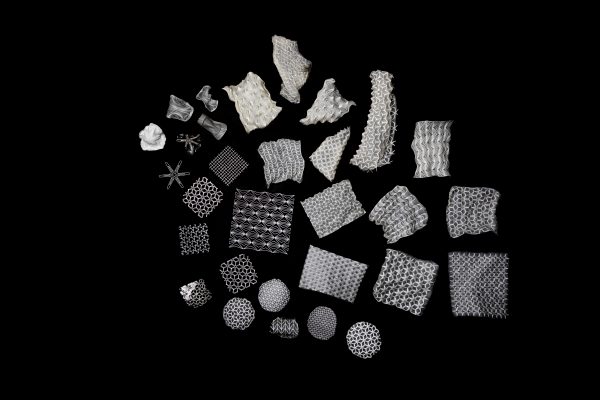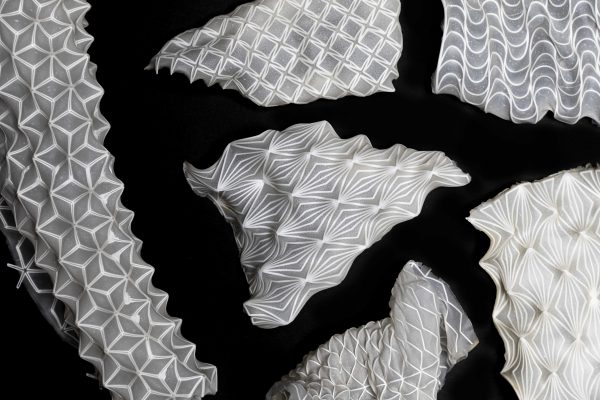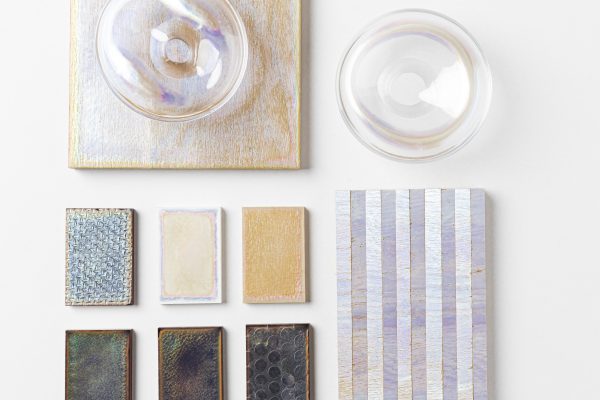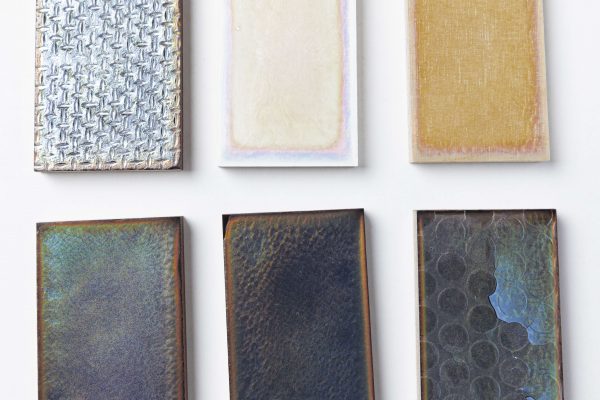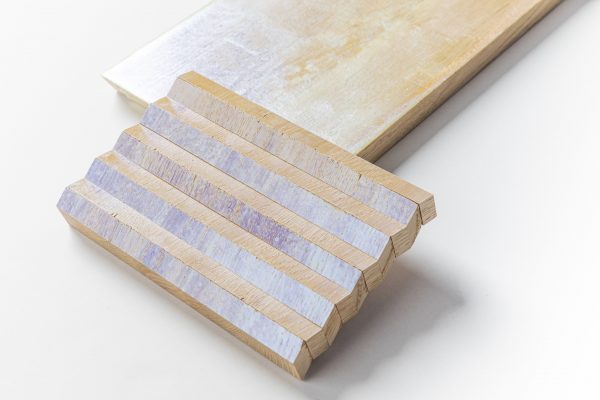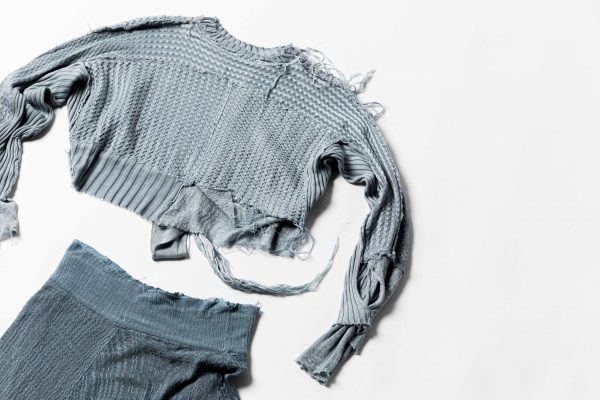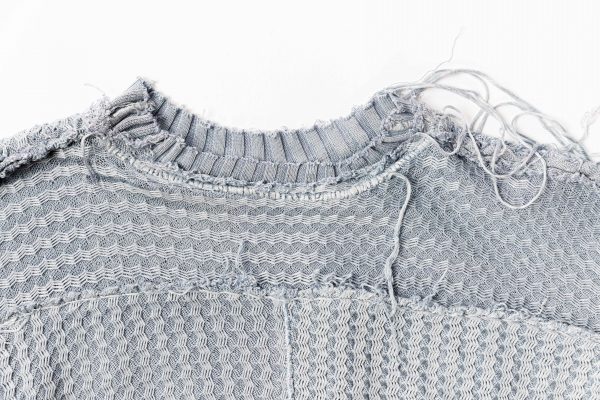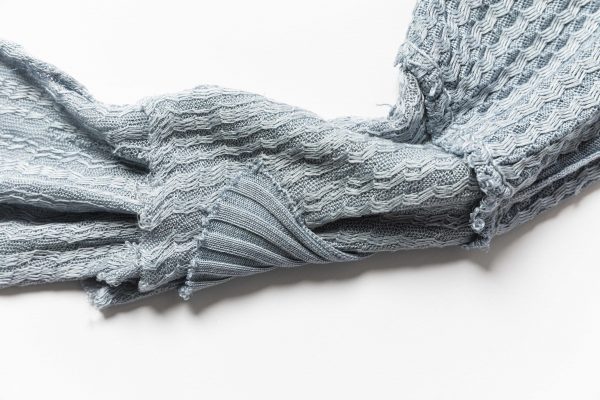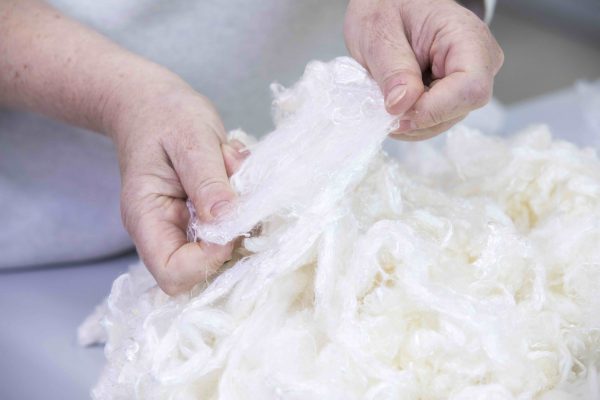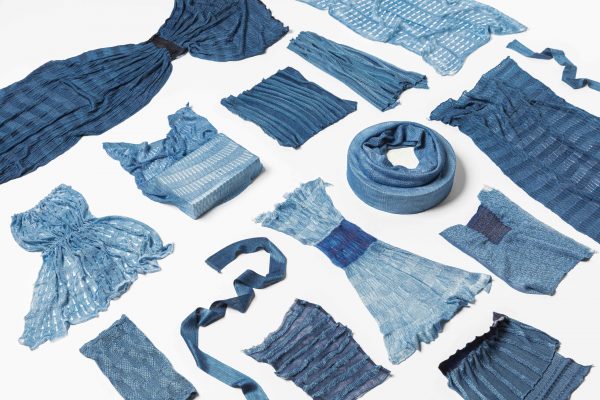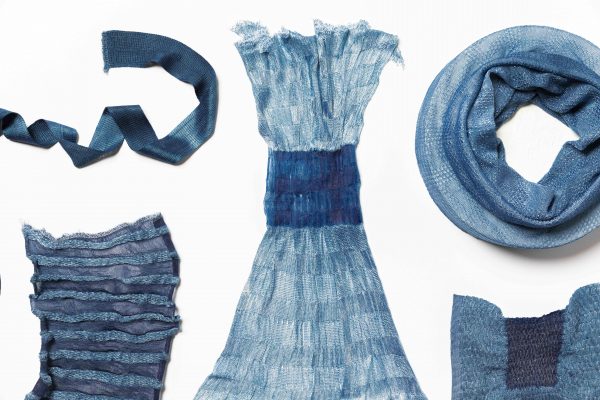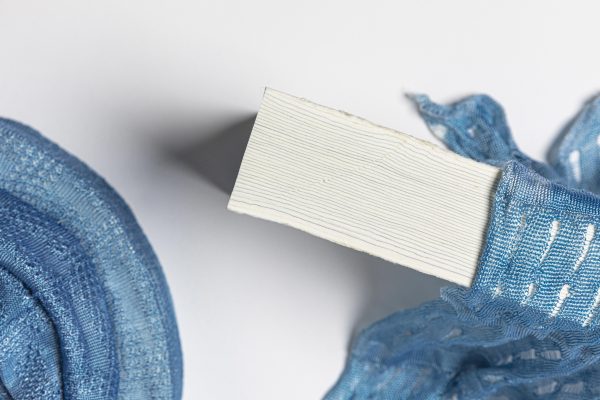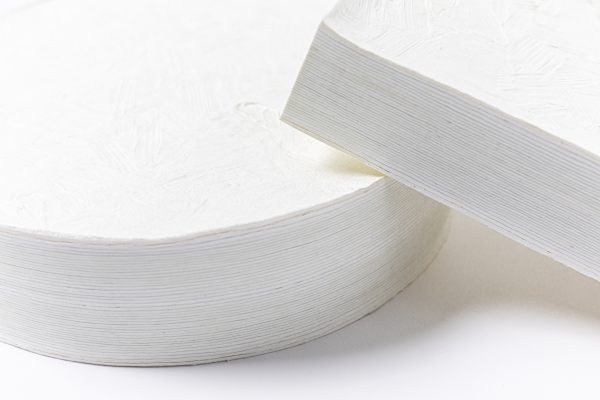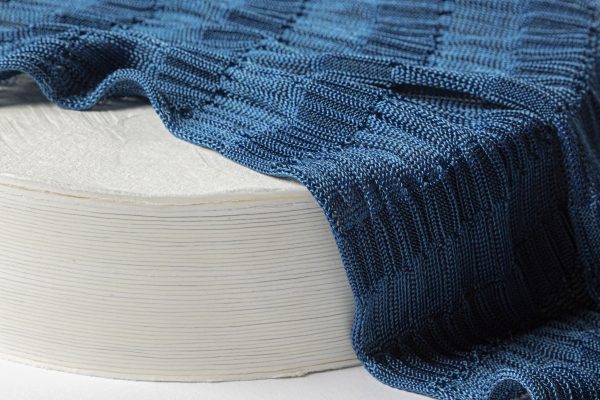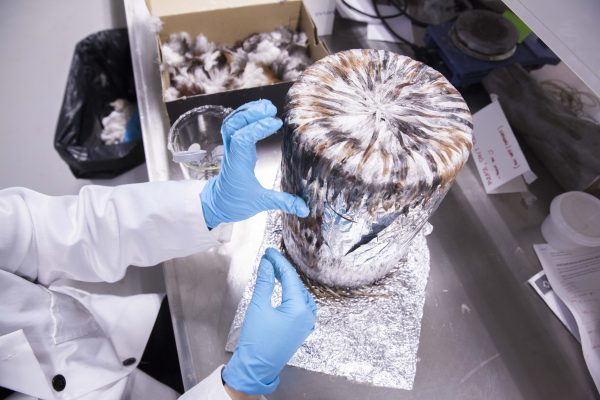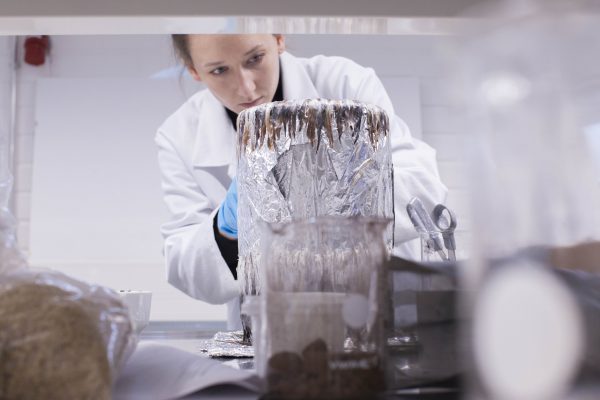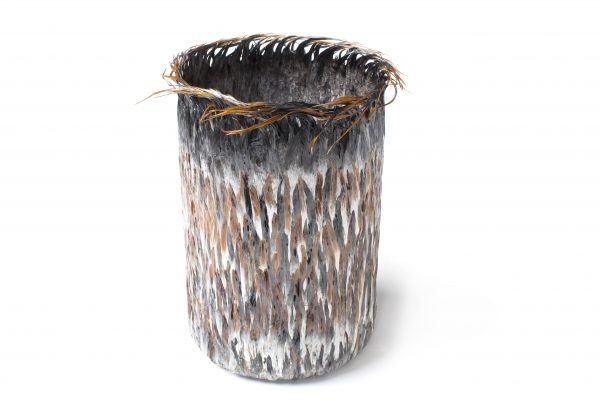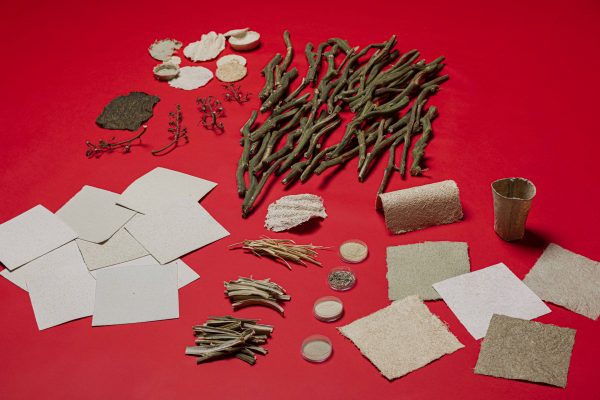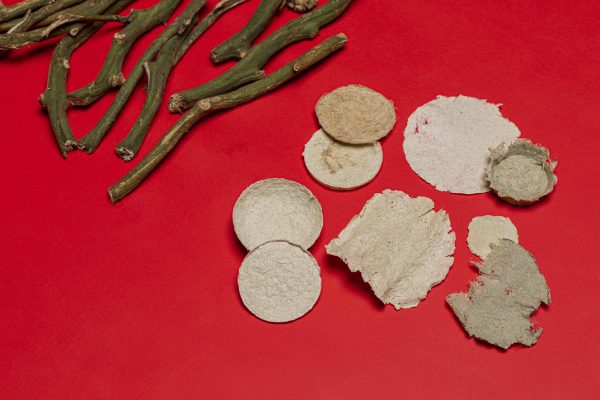
Where: Veem | Floor 3 | Strijp-S | Torenallee 80, 5617 BE Eindhoven, The Netherlands
When: 19.-27.10.2019
Aalto University CHEMARTS is presented for the first time at DDW, the most important international design event showcasing new material-related projects. The CHEMARTS exhibition consist of six concepts that are the result of research conducted into new wood- and cellulose-based materials by students, researchers, lecturers and professors from Aalto University. The exhibited projects are all-cellulose composites with dyers’ Woad, Ioncell textile fibre, structural colour, tomato waste, biodegradable 3D shapes, and nanocellulose mixed with feathers. CHEMARTS has been selected for DDW Bio-design route, and professor Pirjo Kääriäinen will give a talk at DDW talks on 23.10.
In circular economy materials are not only reused or recycled; they are merely stored in products, and used again and again. When designers and scientists join forces already in early stages of materials research, new plant-based materials can be designed and developed for these closed-loop systems.
CHEMARTS is based on continuous and inspiring collaboration between design, fashion and scientific material research at the Aalto University, Finland, since 2012.
Designers from participating teams:
Anna van der Lei & Anna-Mari Leppisaari : Layers of Blue
Anna Semi : Knits from Wood
Megan McGlynn : In Tension
Meri-Tuuli Porras : To-Matter
Noora Yau : Shimmering Wood
Sini West : Plumology
https://www.ddw.nl/en/programme/1705/chemarts
https://www.ddw.nl/en/routes/319/bio-design-route
More information of CHEMARTS and exhibition at Veem:
Pirjo Kääriäinen / pirjo.kaariainen@aalto.fi +358 50 381 0217
Anna van der Lei / anna.van.der.lei@aalto.fi
Anna-Mari Leppisaari / anna-mari.leppisaari@aalto.fi
In tension
From two dimensional patterns to three dimensional shapes
This material experimentation project focuses on shrinkage as an intrinsic quality of drying microfibrillar cellulose (MFC). Encasing geometric tessellations between layers of MFC creates tension in specific directions and produces self-forming curvatures. The encased shapes are 3D printed biodegradable plastic, PLA. The tests include many different patterns, sizes, and drying temperatures. Many of the outcomes are surprising in their strength and peculiarity.
These samples are made of wood-based microfibrillar cellulose (MFC) and nanofibrillar cellulose (NFC), combined with Polylactide (PLA).
Team: Designer Megan McGlynn & material experts from CHEMARTS lab and workshops at the Aalto University.
Shimmering wood
Biodegradable colours that never fade
Nature’s brightest colours – like those found in peacock feathers or butterfly wings – are created through microscopically small nanostructures. When light hits these structures, our eyes perceive their intense and vivid colours. Unlike traditional pigments or dyes, this colour arises only from the physical structure of the material, without the need for chemical compounds. Usually this structural colour is iridescent, turning the typical muted and humble shades of wood into shimmering colours. Shiny or glittery effects – very popular in fashion and design today – are usually created using toxic pigments, plastic-based materials, or metallic foils. This structural colour presents a sustainable alternative to these traditional colorants.
The colour presented here is nontoxic and produced 100% from wood, in an economically viable process. Unlike most existing dyes, structural color does not fade in sunlight.
Team: Designer Noora Yau, Professor Orlando Rojas & material researchers Blaise Tardy and Konrad Klockars at Aalto University School of Chemical Engineering
Knits from Wood
From wood and waste into sustainable textiles
Wood grows in Finland without watering or oversight; in fact, yearly growth currently exceeds harvest and natural loss. Textile fibres made from wood have the potential to reduce carbon emissions, as long lifecycle and recyclability mean that carbon is stored for the fibre’s lifespan. Ioncell is a new process, developed under the leadership of Aalto University Professor Herbert Sixta since 2012, for producing cellulose-based textile fibres for circular economy. The Ioncell process makes use of a safe, non-toxic ionic liquid, developed by University of Helsinki Professor Ilkka Kilpeläinen. Cellulose-based Ioncell fibre is biodegradable and as a result does not release microplastics into the environment during the washing cycle.
Wood pulp, recycled paper or cardboard and cotton waste can be used as raw materials. These knitted garments are 100% Ioncell made of birch trees.
Team: Designer Anna Semi & cross-disciplinary Ioncell research team at the Aalto University
Layers of blue
Creative explorations with wood-based materials and dyer’s Woad
This project shows collaboration where two designers used existing scientific research on biobased materials and colours as the starting point for their artistic exploration. What is on display are knit samples and hard blocks of 100% cellulose dyed with natural dyes. Blue is the rarest colour in the nature, and in Finland a crop named dyer’s Woad yields non-toxic blue, which could potentially replace industrially used chemical colours and reduce the water pollution caused by the textile industry.
Some of the knits are treated with green ionic solvent, and in these partly dissolved cellulosic textile fibres are ‘glued’ together. These so-called all-cellulose composite materials are fully biobased and biodegradable, with no compatibilizer and no extra chemicals. By varying processing conditions material properties can be varied from soft and flexible to strong and rigid, from hydrophilic to hydrophobic. All-cellulose composites are eco-friendly, new functional materials with strong mechanical properties, for example to replace some plastics.
Team: Designers Anna-Mari Leppisaari & Anna van der Lei
Professor Tatiana Budtova & PhD student Chen Feng, Aalto University School of Chemical Engineering (all-cellulose composite) Professor Kirsi Niinimäki and team at Aalto University School of Arts Design and Architecture (Dyer’s Woad) tatiana.budtova@mines-paristech.fr or tatiana.budtova@aalto.fi / feng.chen@aalto.fi / kirsi.niinimäki@aalto.fi
Plumology
Reflections on feather waste
One of nature’s most complex structures can be found in feathers. With a high protein concentration and possessing technical characteristics such as low thermal conductivity and waterproofness, feathers could be regarded as a versatile evolutionary novelty. Plumology is a material research project combining chicken feathers and nanocellulose, aiming to remind us of feathers’ value as a biodegradable and renewable raw material for future product design applications. Chicken feathers are a by-product of the poultry industry and currently disposed of in ways that are environmentally and economically unsustainable.
Chicken feathers have been ‘glued’ with wood-based nanocellulose, meaning that these prototypes are 100% biodegradable.
Team: Designer Sini West and tutors from CHEMARTS lab at the Aalto University.
To-matter
Utilizing side streams from tomato production
Currently biomass from green house cultivation (stems and leaves) is treated mostly as a waste. In tomato production stems and leaves cover roughly 20 % of total fresh material, being 25 % of yield material in relation to the weight of the yield. As the dry matter content in stems and leaves is higher than in tomatoes, approximately 30–40 % of dry matter is in fact in stems and leaves. They contain lot of cellulosic fibbers which can be used for example to manufacture sustainable and recyclable packaging. Farmers could get value out of the biomass by producing their own packaging locally, and reduce their carbon footprint as well.
The samples are made of 100% tomato stem waste or tomato stem-wood pulp mix.
Team: Designer Meri-Tuuli Porras & team of material researchers at CHEMARTS lab at the Aalto University.
DDW Talks: Bio Design
Where: FIFTH | NRE, Gasfabriek 5, 5613 CM Eindhoven, The Netherlands
When: Wed 23th of October 2019
A happy marriage between biology and technology
The Bio Design Talk gets you up to speed on the rapidly-developing field of Bio Design. Discover the difference between designing with nature and designing new nature.
The Bio Design Talk gets you up to speed on the rapidly developing field of Bio Design. Bio Design crosses the border between the ‘made’ and the ‘born’. Enabling living organisms as essential design elements, it brings us products that adapt, grow, sense and repair themselves. Industrial and mechanical systems are replaced with biological processes. Bio design overtakes imitation and biomimicry, completely dissolving the boundaries between organisms and objects. A happy marriage between biology and technology.
The Bio Design Talks is established and curated by Next Nature Network. The day will be moderated by Ruben Baart, editor in chief of Next Nature Network.
William Myers, Author Bio Design: Nature + Science + Creativity
Jalila Essaïdi, Founder BioArt Laboratories and DDW19 Ambassador
Teresa van Dongen, Independent Designer
Emma van der Leest, Independent Designer
Prof. Pirjo Kääriänen, Founder CHEMARTS, Aalto University
Moderator: Ruben Baart (NNN), editor in chief at Next Nature Network
OUR BIOMATERIALS
CHEMARTS LAB


